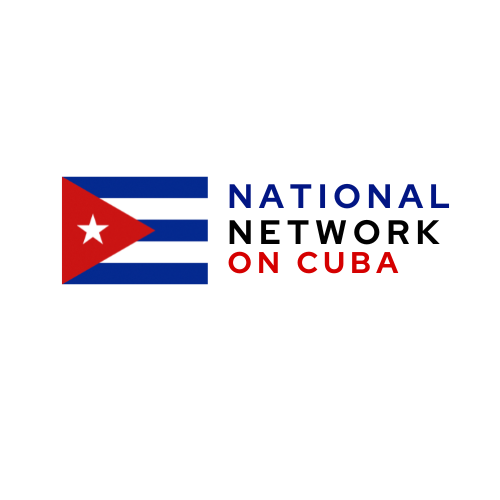Remembering Vilma Espín on the 87th anniversary of her birth
Granma spoke with the combatant of the clandestine struggle, the Rebel Army, and a founder of the Frank País Second Front, Colonel Alberto Vázquez, about his memories of the Cuban heroine on the 87th anniversary of her birth

SANTIAGO DE CUBA.– Colonel Alberto Vázquez García’s participation in the clandestine struggle in Santiago de Cuba, his early incorporation into the Rebel Army, and being among the founders of the Frank País Second Eastern Front, allowed him to interact with Vilma Espín Guillois. Today, on the 87th anniversary of the birth of this extraordinary Cuban woman, he offers some of his fondest memories of her.
“We were practically neighbors, because we lived two and a half blocks from each other. In addition, I was a bus driver on a route that passed by the University of the Oriente, and I often saw her take the bus to go to classes, but it never crossed my mind that this young girl would become that outstanding figure of the struggle and the triumphant Revolution.”
Thus began Vázquez García’s conversation with Granma. Today he is director of the Frank País Second Oriental Front Historical Complex, located in the Santiago mountains, where a rock surrounded by orchids, ferns, roses and other plants that Vilma so liked, treasures the ashes of the Cuban Heroine.

“Afterwards,” he noted, “we began the clandestine struggle and we met in meetings with Frank País, but it was with the armed uprising of November 30, 1956, that I was able to get to know her better, because after the attack on the Maritime Police station we went to the Headquarters of the General Staff, where she was with Frank, Haydée, Hart, Asela de los Santos, and other comrades.
“It was admirable to see her with such equanimity, her attention to the combatants. In that difficult moment she made us a papaya fruit smoothie, and bid us farewell asking us to take care of ourselves. The next time I saw her was February 27 in my house, when she came to give me the antipyretic vaccine, before giving me the instructions for the transfer to the Sierra Maestra, as part of the first reinforcement sent by Frank to Fidel.”
More than a year would pass before Vázquez García saw Vilma again, when he was accompanying the founder and chief of the Second Front, Comandante Raúl Castro Ruz, in the area of Soledad de Mayarí. Vilma passed by in a jeep that would take her to the rebel frontline. Her participation in the guerilla struggle would allow him to repeatedly coincide with her during tours of the Front.
“She led by example,” he notes, “She was capable of undertaking significant unifying work with the peasant women, she created a revolutionary environment among them, which was not easy, because many of these women were not educated or in the proper social situation, but as a Chemical Engineer and given her personal qualities, Vilma had the tremendous ability to do so.
“For this and more one can say that despite being at Raúl’s side, Vilma was a person who shone on her own. It suffices to recall the moment when they killed Frank, in which our leader had fallen, when she took responsibility and began to manage the movement in Santiago, where there were so many reckless fighters, men of different character, and that tremendous courage is not assumed by just anyone.
“For me,” the Colonel emphasizes, “she is the most complete woman I have ever met in the Revolution, given all that is known about her, for everything she did in the clandestine struggle on the orders of Frank and Fidel, for what she did in these mountains and her great contribution after the triumph, for what she was as a wife and as a mother, because she is one of those people who still remain useful after death.”

On noting the character of the heroine, Colonel Vázquez can not avoid a lump in his throat, and almost in a whisper he highlights her sense of organization, her kindness, and modesty, a person whom “was never seen to assume airs and graces or anything of the sort, she always displayed a modesty worthy of admiration.”
Although it is indisputable that Vilma had a special love for the city of Santiago de Cuba, she also fell in love with these mountains, which formed part of her life. She happily returned to them often as part of her duties as President of the Federation of Cuban Women, or accompanying Raúl.
For this reason her desire to remain here forever. Vázquez García explains that when the monument and rock which would hold her remains was being formed, Vilma realized that it would have two niches, side by side, but separated, and said to Raúl, “If we have been together through thick and thin, wherever, why shouldn’t we be after death.”
“So Raúl ordered a single niche. Hence, although two marble slabs are visible on the outside with their names, this rock has a single niche for the both of them.”
Vázquez García notes that Vilma’s decision to have her ashes lay here is a further attraction for the Historic Complex located at the site, given what she represents to the Cuban people, and to the world in the struggle for women’s emancipation.
“In particular for the Second Front,” he concludes, “she is the greatest. If Vilma were a saint, I believe that this entire people would be believers, because this people believed in Vilma, everyone here respects that name. Her stature is in these mountains, and here we honor her, in the greatest task that the Revolution has given us.”



